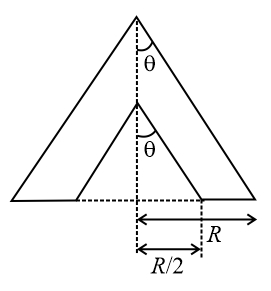Q.
From a uniform solid cone of base radius $R$ and height $H$ , a symmetric cone of base radius $\frac{R}{2}$ is removed as shown.
Then the center of mass is shifted by $\frac{H}{n}.$ Find the value of $n$ .

NTA AbhyasNTA Abhyas 2022
Solution:
